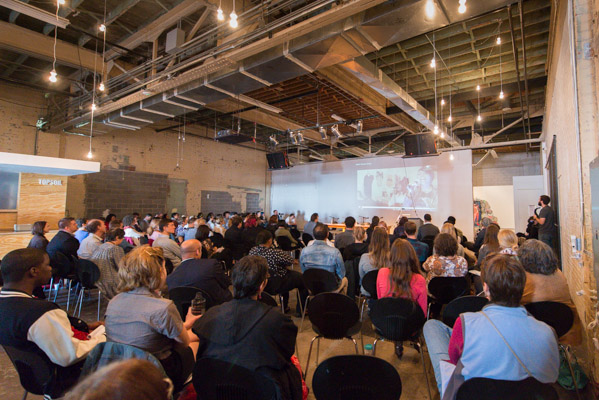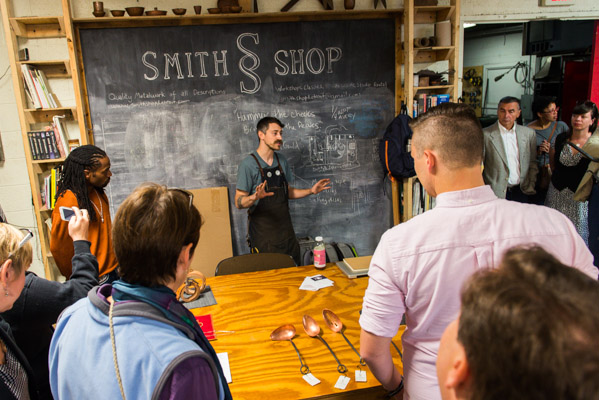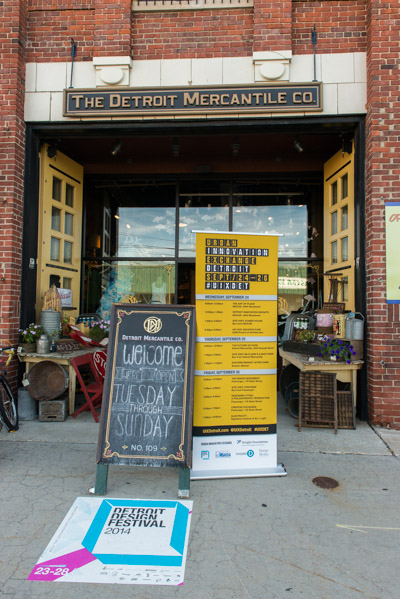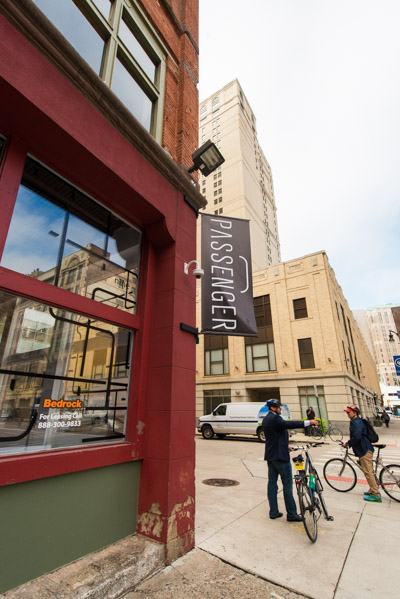The Urban Innovation Exchange (UIXDET) convened in Detroit last week, gathering people from cities around the country to trade ideas for community transformation, and tell personal stories of success and failure, hard work and creativity.
Each morning for three days, chairs filled with bodies, rooms became incubators for ideas and inspiration flowed. In truth, it overflowed beyond the walls of venues and into the streets of Detroit in the form of site visits and overlapping Detroit Design Festival and DLECTRICITY events.
Day One – Art of Place (Museum of Contemporary Art Detroit)
UIXDET began with an introduction by UIX editorial director Claire Nelson and opening thoughts from Katy Locker, Detroit program director for the Knight Foundation. Locker discussed Knight's $5 million Cities Challenge Grant, which began taking applications on October 1 (through November 14). Her message to applicants?
“Keep it simple; we want to keep it open for everyone.”
Idea: Use the city as a gallery
Joan Vorderbruggen of Minneapolis talked about her projects Artists in Storefronts and Made Here, which have turned parts of a South Minneapolis neighborhood into “an urban art gallery.” Her group decorated a pedestrian bridge, did walking tours every Saturday, and turned the community into a “party zone” by making it visually exciting. Made Here was recently awarded a $48,000 grant by the McKnight Foundation.
“All of that money will go to artists,” she said.
 Joan Vorderbruggen
Joan Vorderbruggen
Meanwhile, Erik Howard explained The Alley Project (TAP) Gallery in Detroit, a “sustainable cultural community project and walking gallery that helps transform neighborhoods through art and engagement.”According to Howard, TAP has grown “one garage at a time” and neighborhood youth in southwest Detroit use the garages for expression through art, “becoming producers instead of consumers of media.”
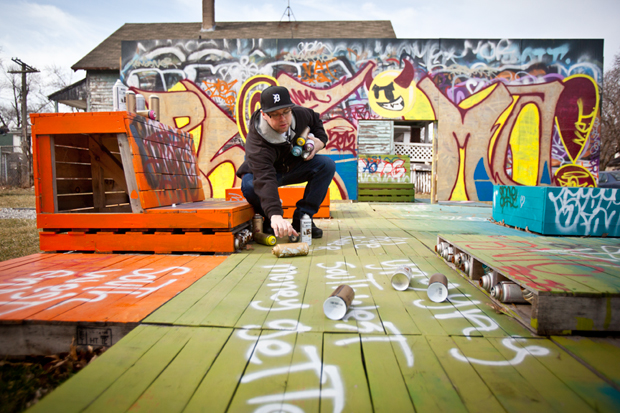
Idea: Use places to bring people together
Sara Blumenstein talked about the Garfield Night Market in Pittsburgh, an effort to activate a struggling neighborhood with a monthly night of food and fun for the entire family. The group behind the project even conducts its own census, using tracking tools that measure development trends in the neighborhood. She also discussed the related Tiny Houses project, an attempt to fill vacant lots in the Garfield community with affordable housing.
Two great ideas from Cleveland were delivered by separate presenters. David Jurca described Pop Up City, a series of projects inspired in-part by research done for the Shrinking Cities exhibition. One of the best ideas was how to take advantage of wintry weather conditions by creating “coldscapes” to improve livability in northern cities. Greg Peckham of Cleveland's LAND Studio advocated connecting multiple neighborhoods — including the Detroit Shoreway community — with greenways, bike transit advocacy and public art.
 Sara Blumenstein
Sara Blumenstein
Idea: Advertise your assets
More innovative work coming out of Ohio was presented by Megan Deal of Cincinnati, who talked about CoSign, a project that uses the city's commercial visual heritage (the American Sign Museum is in Cincinnati) to increase neighborhood vibrancy via creative signage.
Idea: Keep it inclusive
Also presenting on day one was Ryan Myers-Johnson of Sidewalk Festival for the Arts. Her goal is to bring the arts to Detroit neighborhoods, breaking up what she sees as the “exclusivity of the performance art scene.” Amy Kaherl of Detroit SOUP — which delivers micro-grants for creative projects in neighborhoods across the city — and Sebastian Jackson of Detroit's Social Club Grooming Company (which combines hair recycling with efforts to create racial equity through haircutting and conversational storytelling) presented; as did Hunter Franks from the League of Creative Interventionists in San Francisco; and Eve Picker of CityLab Pittsburgh and smallchange.com, a real estate crowdfunding platform that uses small ideas to big advantage.
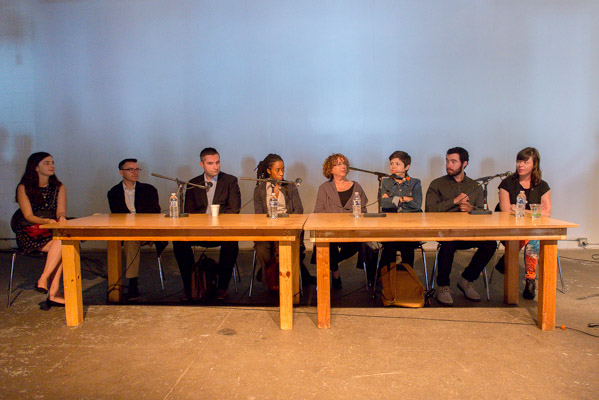 Art of Place panel
Art of Place panel
After the presentations, some attendees visited the Hamtramck and Banglatown neighborhoods, where projects like Power House, Play House, Write-A-House and Popps Packing are helping change community life through social art and design.
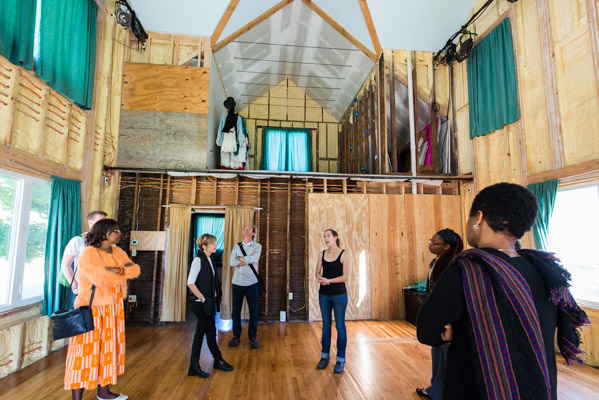 The Hinterlands’ Play House
The Hinterlands’ Play House
Day Two – The Future of Food (Detroit Mercantile)
Day two began with a welcome wakeup call — “We are coming out of a 50-year coma” when it comes to what we eat — by Detroit Eastern Market Corporation President Dan Carmody, who also plugged Eastern Market After Dark, an event taking place later that evening.
Idea: Reuse and re-build, don't re-invent
Kim Bartmann of Tiny Diner in Minneapolis talked about how the restaurant and farm is a “small place with big ideas,” that works on “rebuilding old, not having to invent new” and partners with a permaculture group in the city. Despite being required to go through a difficult re-zoning and permitting process with the city, the business added solar panels and created an ecological garden.
 Kim Bartman
Kim Bartman
Idea: Farm the city — indoors and out
Anthony Hatinger's CDC Farm & Fishery acquired a former liquor store at the corner of Second and Philadelphia on Detroit's near west side and converted it into a farm for raising tilapia. Nutrients from the water used in the tanks is then transferred to a garden, where various greens are grown.
“We produce food, jobs, and hope,” said Hatinger.
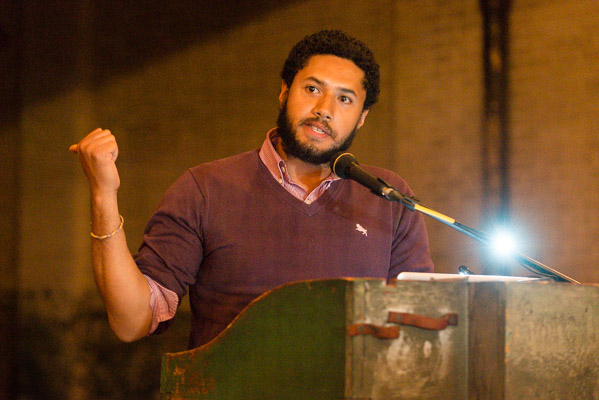 Anthony Hatinger
Anthony Hatinger
Philadelphia's Dwayne Wharton of The Food Trust said the best way to know the future “is to create it.” His group works at grant everyone access to healthy, affordable food choices.
“The zip code matters more than genetic code,” explains Wharton. “People die earlier where diet is poor.”
Keymah Durden of Cleveland's Rid-All Green Partnership said his group is all about urban farming, composting and aquaponics.
“Environmental and social justice is the largest movement in human history,” he insisted. “We are about 'original state' agriculture, growing healthy children to become the urban farmers of tomorrow.”
Idea: Keep it fresh, always
Peter Dalinowski of Hamtramck's revolver discussed his novel idea to bring in rotating chefs each weekend at his restaurant, located in a diverse neighborhood populated by ethnic Bangladeshi, Yemeni and Polish communities.
“We are not a pop up,” he said, “We are a permanent space. We run the front and the chefs run the back. There is no hierarchy and respect extends to everyone.”
Idea: Do the things that don't cost money, like building relationships
Devita Davison talked about two projects, FoodLab Detroit and Detroit Kitchen Connect.
“We are turning church kitchens into incubators,” said Davison. Foodlab Detroit's mission is to “cultivate, connect, catalyze,” helping food entrepreneurs get started and build relationships.
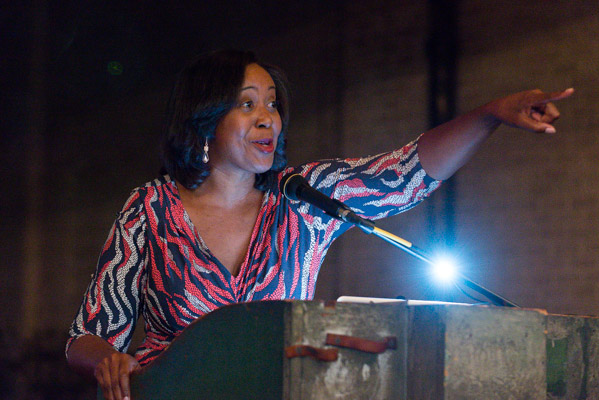 Devita Davison
Devita Davison
Brittany Sanders spoke for the Detroit Food Academy, a group that helps Detroit high school students develop into leadership roles as social entrepreneurs.
Bobby Fry, from Pittsburgh's Food Revolution Cooking Club, said it is important to “use local things, empower people, make beautiful food, engage the community, keep them excited.” Fry also advised food people to “build relationships and pay attention to things that don't cost money.”
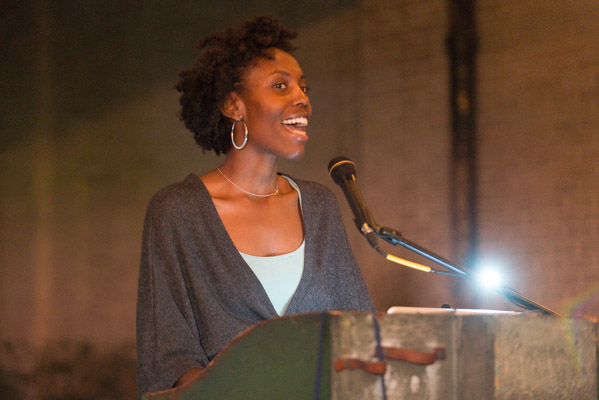 Brittany SandersSara Blumenstein of the Pittsburgh Canning Exchange talked about canning swaps and parties that build community.
Brittany SandersSara Blumenstein of the Pittsburgh Canning Exchange talked about canning swaps and parties that build community.
“Nothing makes me happier than seeing a hipster and a grandmother sharing recipes,” she said.
Day two's site visit was to McClure's Pickles on St. Aubin near the Hamtramck border, and to the Michigan Urban Farming Initiative in the North End neighborhood.
Day Three – The Maker Movement (Passenger)
The final day of UIX was held at Passenger, the newish live/work space for resident artists in rapidly redeveloping Capitol Park.
Idea: There's no such thing as a skills gap, but there is a values gap
Jen Guarino of Detroit's Shinola and the Makers Coalition of Minneapolis addressed the so-called skills gap in American manufacturing by saying there isn't one, but “there is a values gap.”
“Now is the time for a wake up call in manufacturing,” she said. “We have to look at skilled labor as an asset not as a cost. Let's be passionate about what we do. Let's be passionate about the people who do what we do.”
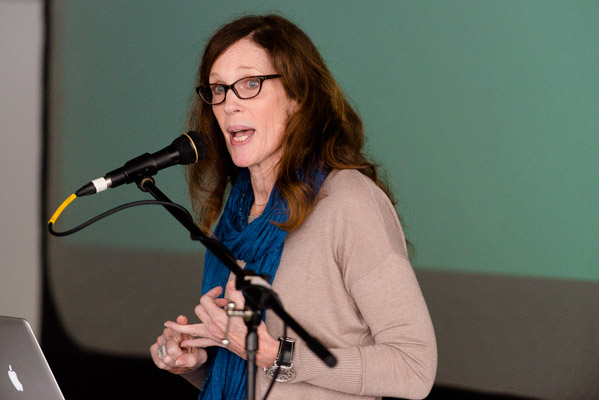 Jen Guarino
Jen Guarino
Idea: Build spaces where kids can tinker
Jeff Sturges of Detroit's Mt. Elliott Makerspace talked about his goal to “expose people to as many things as possible at an early age.” As a kid, “I had spaces to tinker and blow things up.” Mt. Elliott is all about fundamentals: communication, wearables, food and wellness.
Idea: Embrace the skills of locals
Matt Anthony of Cincinnati's First Batch and Cincinnati Made talked about creating an accelerator for small batch manufacturing, facilitating connections, encouraging idea development and showing that impact can be made with innovative products.
Sara Aldridge and JeanMarie Morrish of Our/Detroit, a vodka distillery in southwest Detroit, are proud that their business is women-owned and operated, uses ingredients sourced within five miles of their location and “has great local partners, like McClure's Pickles.”
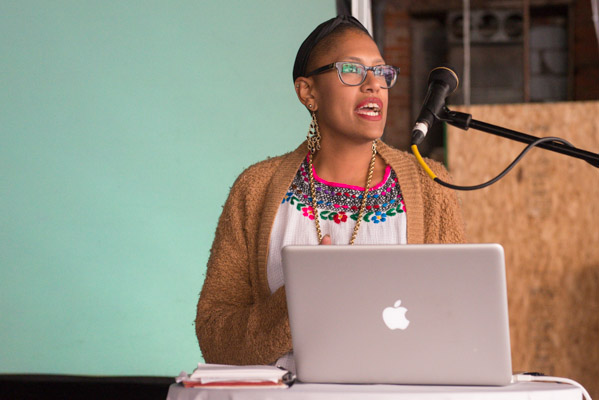 Sara Aldridge
Sara Aldridge
Idea: Don't get sold a brand, build your own
Michael Evans of LOVELAND Technologies in Detroit called his group “data geeks” who, with the help of Motor City Mapping, “surveyed every single parcel” in the city last winter. He advised people to “learn a hard skill and find a way to communicate it.”
Clement Brown Jr., of the FAME SHOP on Joy Road in Detroit's west side, told a moving story of a boy whose grandparents bought him an outfit, including a $200 pair of gym shoes, only to be be robbed, shot and killed over the items. Brown, who grew up in an abusive home, began to make T-shirts when he was a teenager to “separate himself from what was going on out on the street.” His goal was to “help kids appreciate their own personal brand, not commercial brands.”
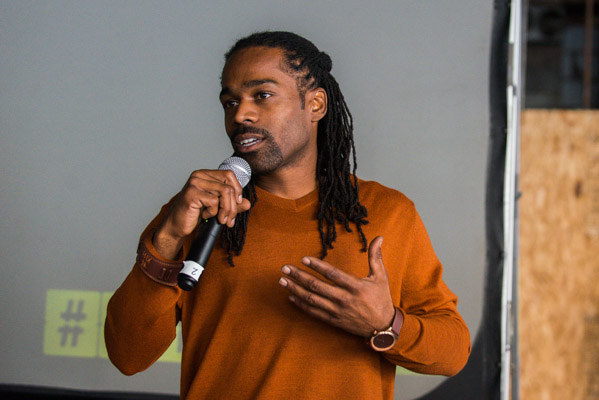 Clement “Fame” Brown, Jr.
Clement “Fame” Brown, Jr.
Idea: Chaos isn't a pit, chaos is a ladder
The morning's last speaker was John Fetterman, mayor of Braddock, a small town outside of Pittsburgh. Fetterman, who has done national media interviews about the fall and rise of Braddock, introduced himself bluntly by saying: “My town was more fucked up than yours ever was.” He described a city, once known for its steel works, that lost 90 percent of its population over a 50 year period. Fetterman spoke with passion, color and humor, paraphrasing dialogue from HBO's Game of Thrones (“Chaos isn't a pit, chaos is a ladder”), and referencing the Detroit Lions (“But the Steelers are better,” he said with a laugh).
He turned serious when discussing the fact that Braddock had gone five years without a homicide until late this summer (“Safety is the number one issue for cities,” he said); the city has set up a free store to address basic needs of its residents.
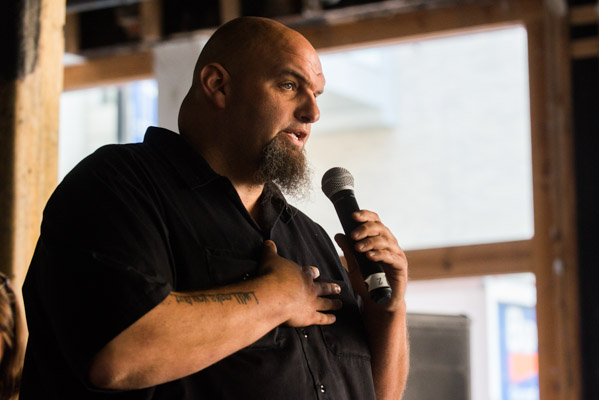 John Fetterman
John Fetterman
After a panel discussion moderated by Issue Media Group's director of content Amy Elliott Bragg, the group left by bus to see co-working and maker spaces at Ponyride.
Folks came back to Passenger to hear Knight Foundation president Alberto Ibargüen and vice president for community and national initiatives Carol Coletta in conversation about what cities need to do to accelerate talent. There was a Creative Exchange happy hour right after, and design festival crawls and Dlectricity installations to attend even later.
The day and night would have to come to an end, though it's likely there were many who did not want it to. It was a special day, and the end of a special week in Detroit.
Looking for more inspiration from urban innovators whose small-scale projects are having big impacts on cities? Visit Urban Innovation Exchange. (Don't forget to like UIX on Facebook and follow it on Twitter, too!)
—
Walter Wasacz is former managing editor for Model D.
All photos by Doug Coombe.

